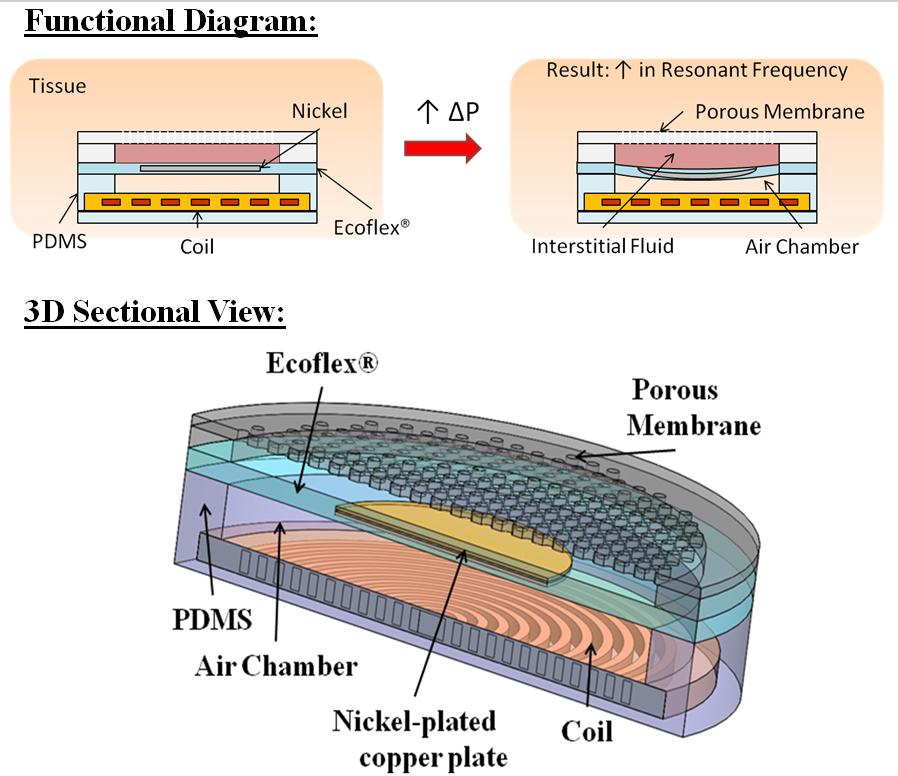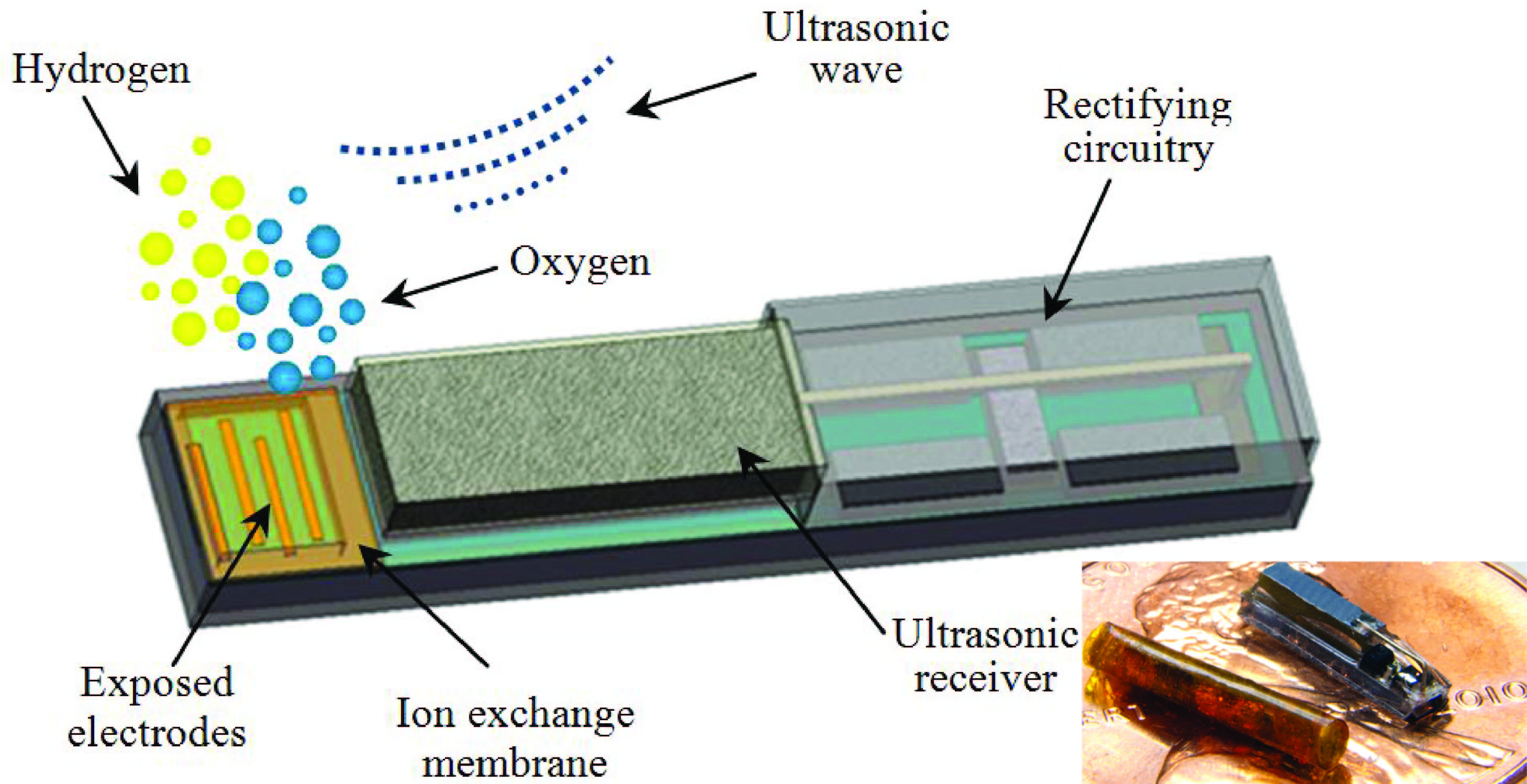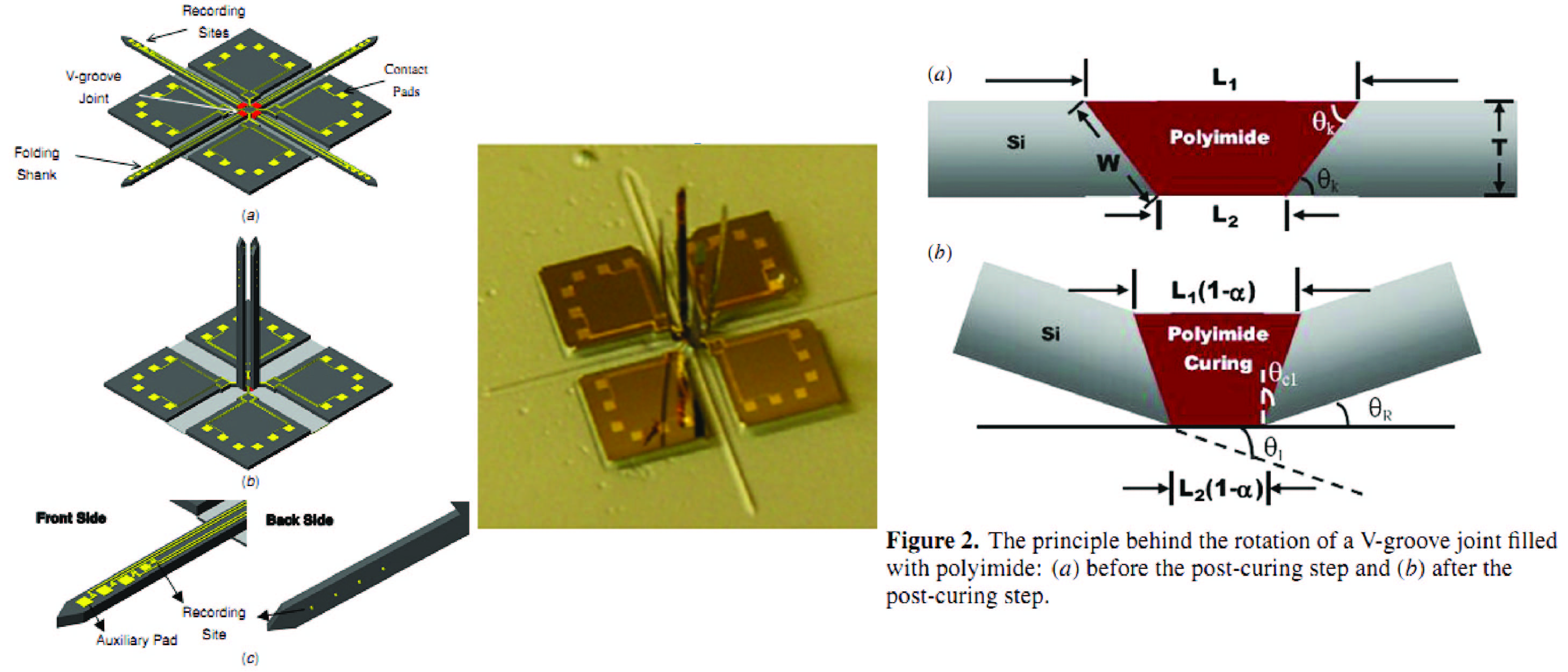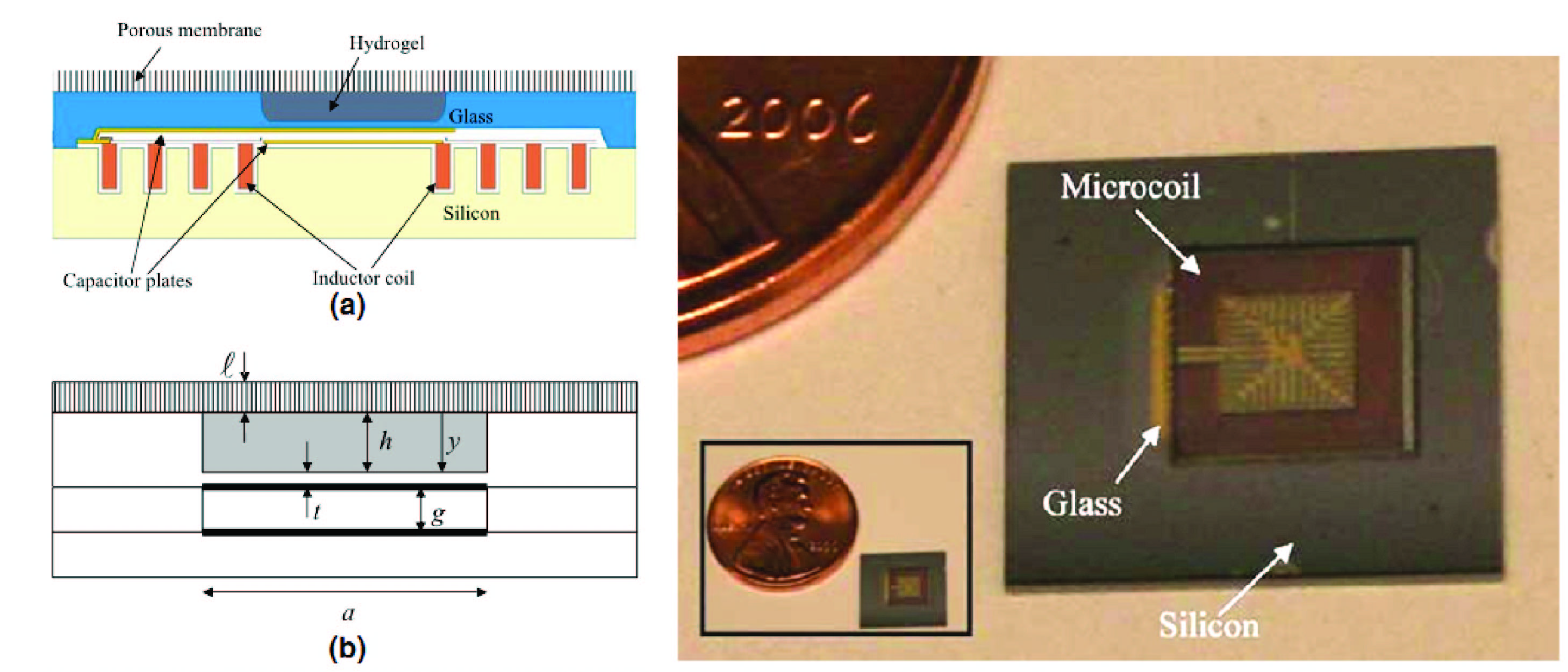Implantable Microsystems

A Wireless Interstitial Pressure Sensor With A Guyton Chamber
S.H. Song, M. Brown, T. Maleki, and B. Ziaie
In this paper, we present a wireless interstitial fluid pressure sensor incorporating a perforated chamber first introduced by Guyton. The Guyton chamber allows for an accurate measurement of IFP without the interference from various cellular components by permitting the interstitial fluid to penetrate the chamber after implantation. The sensor consists of a coil, an air chamber, a silicone membrane embedded with a nickel plate, and a Guyton chamber. The fabricated device is 6 mm in diameter and 1 mm in thickness. The measured sensitivity is 20 kHz/mmHg from -5 to 15 mmHg.

Implantable Micro Oxygen Generator (IMOG)
S.H. Song, T. Maleki, B. Ziaie
In this paper we present an ultrasonically-powered implantable micro oxygen generator (IMOG) that is capable of in situ tumor oxygenation through water electrolysis. Such active mode of oxygen generation is not affected by increased interstitial pressure or abnormal blood vessels that typically limit the systemic delivery of oxygen to hypoxic regions of solid tumors. Wireless ultrasonic powering (2.15 MHz) was employed to increase the penetration depth and eliminate the directional sensitivity associated with magnetic methods. In addition, ultrasonic powering allowed for further reduction in the total size of the implant by eliminating the need for a large area inductor. IMOG has an overall dimension of 1.2x1.3x8 mm^3, small enough to be implanted using a hypodermic needle or a trocar. In vitro and ex vivo experiments showed the IMOG is capable of generating more than 150 mA which in turn can create 0.525 ml/min of oxygen through electrolytic dissociation. In vivo experiments in a well-known hypoxic pancreatic tumor model (1 cm^3 in size) also verified adequate in situ tumor oxygenation in less than 10 minutes.

Implantable Wireless Dosimeters for Radiation Oncology
T. Maleki, C. Son, B. Ziaie
We present the development of two radiation detectors for accurate dose monitoring in radiation oncology. The first one is a passive MEMS-based miniature ionization chamber for total accumulated dose measurement. A sensitivity of 49 kHz/Gy in a dynamic range of 30 Gy was achieved in an LC configuration. The second transducer is based on a sensitive solid-state structure that can be used in active interrogation schemes. This sensor exhibited a sensitivity of 50 k¿/Gy in a dynamic range of 20 Gy.
Publication
A self-assembled 3D microelectrode array
M.-F. Wang, T. Maleki, and B. Ziaie
In recent years, microfabricated electrodes have attracted a great deal of attention for recording neural ensembles with superior resolution and spatial density. In this paper, we describe a self-assembly process for fabricating 3D microelectrode arrays in silicon. The electrode array is composed of four silicon shanks (200 µm wide, 4 mm long and 30 µm thick) with polyimide-filled V-groove joints at the back end and four 20 × 20 µm^2 recording sites (200 µm separation) at the tip. The shanks automatically fold to a vertical configuration upon proper heat treatment, hence creating a 3D configuration without the need for any manual assembly.
Publication
Hydrogel-based microsensors for wireless chemical monitoring
M. Lei, A. Baldi, E. Nuxoll, R. A. Siegel and B. Ziaie
We report fabrication and characterization of a new hydrogel-based microsensor for wireless chemical monitoring. The basic device structure is a high-sensitivity capacitive pressure sensor coupled to a stimuli-sensitive hydrogel that is confined between a stiff porous membrane and a thin glass diaphragm. As small molecules pass through the porous membrane, the hydrogel swells and deflects the diaphragm which is also the movable plate of the variable capacitor in an LC resonator. The resulting change in resonant frequency can be remotely detected by the phase-dip technique.
Publication